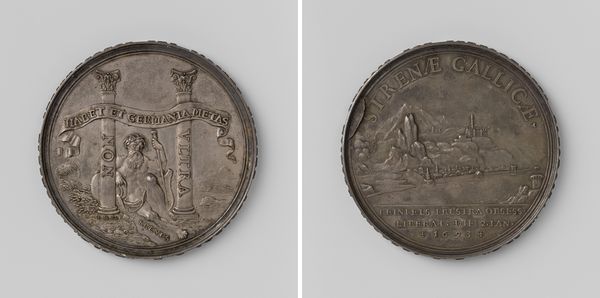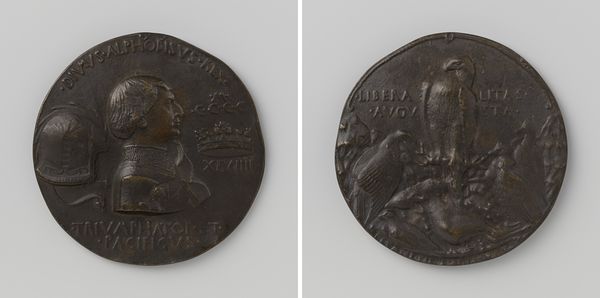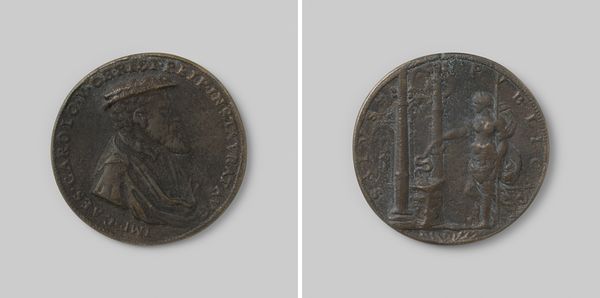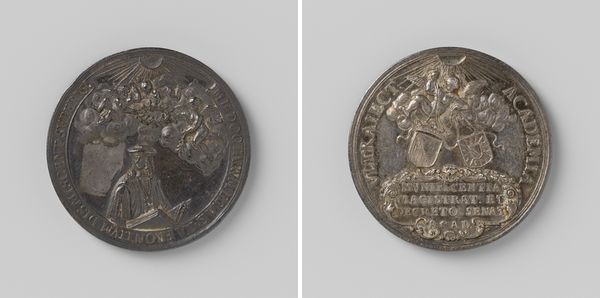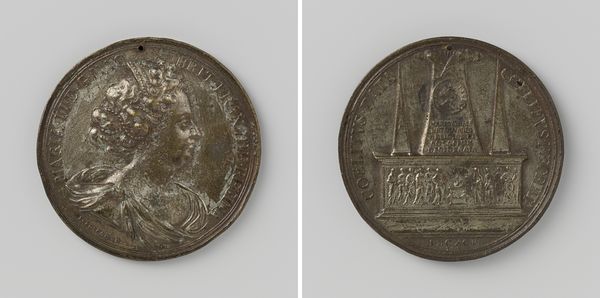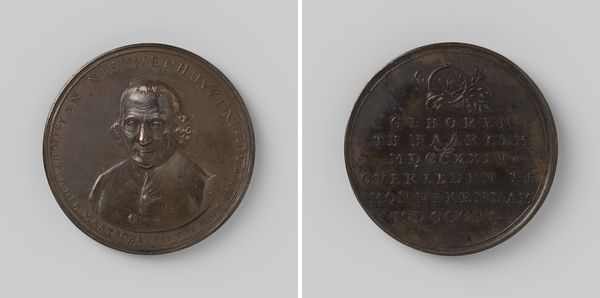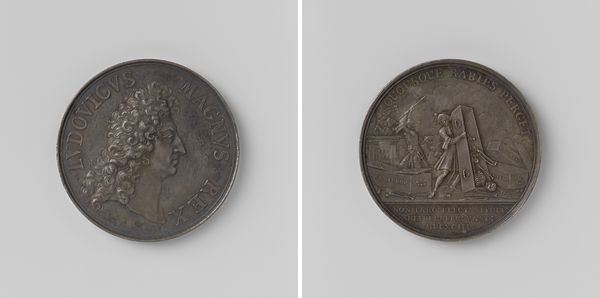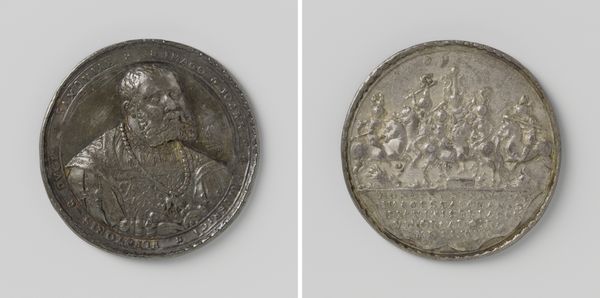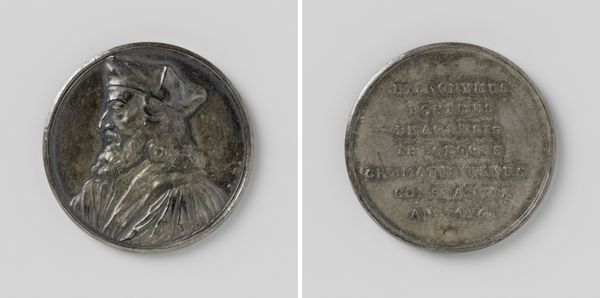
metal, relief, sculpture, engraving
#
portrait
#
baroque
#
metal
#
sculpture
#
relief
#
sculpture
#
history-painting
#
engraving
Dimensions: diameter 5.8 cm, weight 84.17 gr
Copyright: Rijks Museum: Open Domain
Editor: Here we have "Overlijden en begrafenis van Maria II van Engeland," a metal relief created in 1695. It’s at the Rijksmuseum. The imagery seems so precise, and a bit bleak. What stands out to you from a visual perspective? Curator: Note the bilateral symmetry; two scenes presented on a disc of metal. This immediately prompts a structural reading, begging the question: How are the forms and shapes constructed to communicate meaning? Consider the obverse and reverse. One shows a regal profile in high relief; the other, a bustling scene executed in a more shallow register. Editor: I see what you mean. The portrait side seems straightforward in comparison. The funeral scene feels much more dynamic and layered. Curator: Precisely. The texture is crucial; notice how light reflects off the metal to differentiate the foreground from the background. The engraver utilizes linear perspective, not for realistic effect, but rather, to delineate a spatial hierarchy, thereby focusing the viewer’s gaze toward the center. Do you see how the two halves work independently, but are joined together through careful planning? Editor: Absolutely! The visual composition creates two very distinct moods that still manage to balance each other on the same piece. It is really an achievement of symmetry and semiotics! Curator: Indeed. Reflect on the function of the object itself. Is this an artwork, or an artifact? How do its formal attributes complicate any simple classification? Editor: That’s a lot to consider! Thank you for showing me the layers in its material construction and composition. I have new appreciation for how artists can utilize such formal elements!
Comments
No comments
Be the first to comment and join the conversation on the ultimate creative platform.


